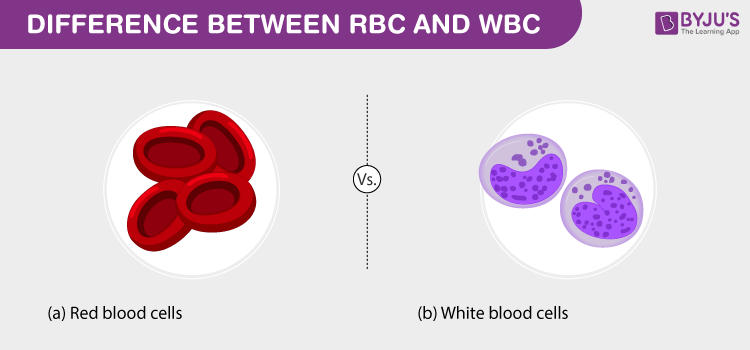Are Blood Cells From a Producer or Consumer
10903 New Hampshire. As every organism can feed on multiple things a food web.

Blood Cells Formed Elements Of The Blood
Produce white blood cells and antibodies.

. Secondary consumers such as a weasel or snake eat the primary consumers. Advertisement Advertisement Mrmix Mrmix Answer. Consumers are always more complex organisms than producers.
Humans are a common tertiary consumer because they have few predators. And tertiary consumers like barn owls eat both. Producers are living organisms that are able to make their own food through a process called photosynthesis.
A producer plant - consumer something that eats the producer - prey something that. Are blood cells from producer or consumer. Fueled by the energy from food molecules cells can combine and recombine the elements of life to form thousands of different molecules.
A thin semi-permeable membrane that surrounds the cytoplasm of a cell enclosing its contents. What cell part name is used to describe the dark center of a frog blood cell. Division of Communication and Consumer Affairs.
They typically dont get eaten by other animals. Advertisement Advertisement New questions in. A primary consumer is an organism that feeds on primary producers.
Office of Communication Outreach and Development. Center for Biologics Evaluation and Research. These terms describe what types of food the organism consumes and help us know how they go about securing their food source.
Secondly over time parts of dead cells deteriorate akin to a fruit rotting. A consumer because animals have blood cells and they are incapable of producing their own energy. Organisms of this type make up the second trophic level and are consumed or predated by secondary consumers tertiary consumers or apex predators.
Plants dont have blood. Examine and identify as many organisms as possible from a soil community. Lions are another example of a tertiary consumer because facing a lion is tough.
Eagles and owls fit here too. Here the producers are consumed by the predators-primary and secondary consumers and then the detritivores and finally by decomposers. Primary consumers mostly herbivores exist at the next level and secondary and tertiary consumers omnivores and carnivores follow.
Are blood cells from a producer or consumer. Decomposers which will not be discussed further in this article turn the dead material of producers and consumers into nutrients which are then used by producers plants to grow. There are always more consumers than producers in food chains.
Some blood vessels increase in size and sweat glands will excrete sweat resulting in a lower body temperature. Structures found in a typical photosynthetic Euglena cell include. They are the consumers of producers.
33 In the ecosystem of a tropical rainforest the producers obtain energy from the A consumers. The sickle-shaped red blood cells can block the blood flow in the tiny capillaries causing pain and damage to body organs. Primary consumers such as deer and rabbits eat only producers.
When many such individual food chains occur in an ecosystem it is known as Food Web. A flexible membrane that supports the plasma membrane. Do Frogs Blood Cells Have A Nucleus.
Yes they have a nucleus unlike our blood cells because frog cells dont have any other place to put. Gel-like aqueous substance within the cell. As stated above in adults the principal sites of red cell production called erythropoiesis are the marrow spaces of the vertebrae ribs breastbone and pelvis.
What cell part name is used to describe the outer edge of a frog blood cell. A food chain shows a direct transfer of energy between organisms. Red blood cells white blood cells platelets A antibody production clotting oxygen transport B clotting oxygen transport antibody production.
Both the energy despite some loss and the materials despite being reorganized pass from producer to consumer perhaps from algal tails to water flea hearts to dragonfly eye colors to fish muscle to you. When a stem cell divides it first becomes an immature red blood cell white blood cell or platelet-producing cell. In addition to skeletal muscle cells examples of cells that continually produce lactic acid are red blood cells immune cells in the lymph nodules proliferating cells in the bone marrow and epithelial cells in the skin.
Producers consumers and decomposers. At the top of the system are the apex predators. According to piaget children have acquired the cognitive skill of conservation when theyre able to a.
What Are Consumer predator Prey And Producer. All living organisms can be divided into three categories. Producers who make their own food using photosynthesis or chemosynthesis make up the bottom of the trophic pyramid.
Marrow which is soft fatty tissue that produces red blood cells many white blood cells and other immune system cells is found inside bones. In addition the sickle-shaped red blood cells do not last nearly as long as normal red. Food and Drug Administration.
Production of red blood cells erythropoiesis Red cells are produced continuously in the marrow of certain bones. The immature cell then divides matures further and ultimately becomes a mature red blood cell white blood cell or platelet. Firstly when a cell is living you can observe the cellular processes as they happen.
Within the bone marrow the red cell is derived from a primitive. Notice that skeletal muscle produces lactate even at rest although at low rate. Understand that six ounces of liquid in a jar and six ounces in an elongated tube are equal.
Animals who have no predators other than humans. Distinguish between producer and consumer organisms. Euglena Cell Anatomy.
Primary consumers are usually herbivores that feed on autotrophic plants which produce their own food through photosynthesis. When it comes to food chains tertiary consumers are the top dogs. 34 A generalised food chain may be shown as follows.
Produces are living things such as plants. 1 Show answers Another question on Biology.

Medical Definition Of Red Blood Cell


Comments
Post a Comment